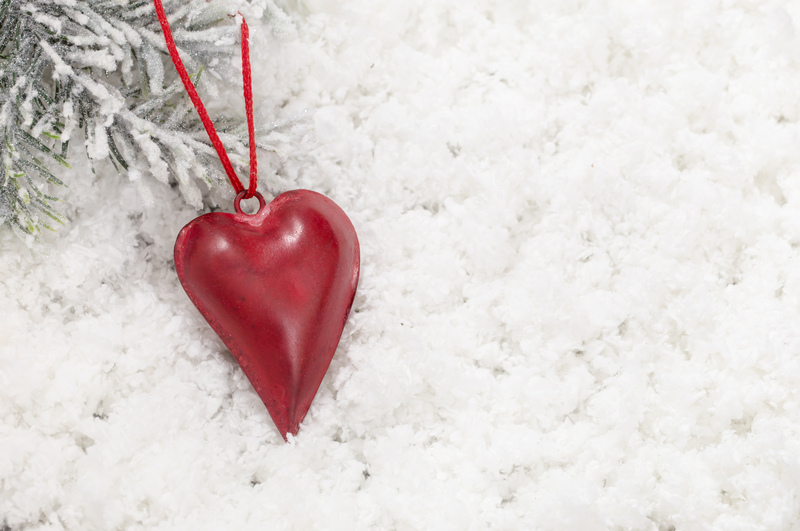Keep Cookware Out of Landfills: Recycling Pots and Pans
Every year, tons of old cookware are discarded and end up in landfills, contributing to environmental pollution and resource wastage. If you are looking for responsible ways to say goodbye to your used pots and pans, this comprehensive guide on recycling cookware and other kitchen items is for you. Learn how to keep cookware out of landfills, the best practices for recycling pots and pans, and how to give them a new lease on life--all while reducing your carbon footprint!
Why Should We Recycle Pots and Pans?
Household cookware, including pots, pans, and baking trays, are staples in every kitchen. When they become scratched, warped, or lose their non-stick coating, most people simply toss them in the trash. However, disposing of cookware in landfills is harmful for several reasons:
- Metal Pollution: Pots and pans are often made from metals like aluminum, stainless steel, and copper. When these end up in landfill, the metal can take hundreds of years to break down, leaching chemicals into the soil.
- Resource Waste: Most cookware is made from valuable, recyclable materials. Throwing them away wastes resources that could be reprocessed.
- Environmental Impact: Manufacturing new cookware requires extra energy and raw materials, releasing greenhouse gases. Recycling old cookware helps conserve those resources.
By recycling pots and pans, we're not only preventing pollution but also participating in a circular economy that values reuse and resource conservation.

Understanding What Cookware Is Made Of
Before you can properly recycle your old cookware, it's important to understand the materials involved. Common types include:
- Stainless Steel: Durable and 100% recyclable.
- Aluminum: Lightweight and highly recyclable, but must be separated from coatings if possible.
- Copper: A valuable metal that's in high demand in scrap recycling.
- Cast Iron: Heavy and extremely long-lasting, usually accepted as scrap metal.
- Non-Stick (Teflon-coated): The metal core is recyclable, but Teflon/PTFE coatings may cause limitations in some recycling centers.
- Ceramic, Glass, and Enamel: Less commonly recycled, but some specialist centers accept them.
Knowing your cookware material helps you better determine how and where to recycle pots and pans responsibly.
How to Prepare Cookware for Recycling
Most recycling centers and scrap yards have some requirements for accepting used cookware. Follow these tips before dropping items off:
- Remove non-metal parts, such as plastic or wooden handles and lids. These can sometimes be recycled separately.
- For non-stick pans, check if your center accepts Teflon surfaces. If not, consider repurposing or donating.
- Clean cookware to remove food residue, grease, and debris.
- Sort by metal type if possible--this makes the recycling process more efficient.
The more effort you put into sorting and cleaning, the more likely your local recycling facility can accept your items.
Where to Recycle Old Pots and Pans
Recycling cookware methods depend on your locality and the material. Here are your main options:
1. Municipal Recycling Programs
Some cities allow residents to recycle pots and pans with their curbside metal or single-stream recycling. Check your city's recycling guidelines online or call your local waste management department. Many programs accept:
- Aluminum and stainless steel pots and pans
- Baking sheets and trays
- Metal lids (without plastic parts)
Tip: Non-stick coatings and plastic handles might not be accepted--always confirm first.
2. Scrap Metal Recyclers
Scrap yards or scrap metal recyclers are the best place to recycle all-metal cookware, including:
- Damaged pans
- Rusty or bent pots
- Cast iron cookware (even in bad shape)
- Copper-bottom pans
Remove as much plastic, silicone, or other non-metal components as possible. *You might even earn money for valuable metals like copper or stainless steel!*
3. Specialty Recycling Centers
Some eco-centers accept hard-to-recycle household goods, including ceramic and glass baking dishes. Search online for "specialty recycling center" or "hard to recycle household items" in your area.
4. Retailer Take-Back Programs
Certain kitchenware retailers offer take-back or trade-in programs for old cookware when you purchase new items. Notable examples include:
- Bed Bath & Beyond
- Williams Sonoma
- Sur La Table
- Le Creuset
Check their websites or contact customer service for details.
Other Sustainable Options for Old Cookware
If you cannot recycle your pots and pans due to coatings or mixed materials, don't despair! There are many eco-friendly alternatives to landfill disposal:
1. Donate to Charity or Community Organizations
If your cookware is still usable, many charities accept them for people in need. Options include:
- Local shelters or food banks
- Thrift stores (Goodwill, Salvation Army)
- Churches or community centers
*Always check if there are restrictions on non-stick or damaged cookware.*
2. Give Away or Sell
List your old cookware in online marketplaces like Facebook Marketplace, Craigslist, Freecycle, or OfferUp. Someone might want them for:
- Camping or outdoor use
- Art projects
- Student apartments
3. Repurpose or Upcycle at Home
Get creative before recycling pots and pans--repurpose old cookware into functional or decorative items:
- Use old pots as planters for herbs or flowers.
- Turn a frying pan into a quirky clock or wall art.
- Use baking trays as organizers in garages or studios.
- Make bird baths, candle holders, or garden sculptures.
Common Questions About Recycling Kitchen Pots and Pans
Can Non-Stick Pans Be Recycled?
Some recyclers do not accept pans coated with Teflon or other non-stick surfaces. However, if you remove the non-metal parts and the recycling center can isolate the metal, it MAY be accepted. Otherwise, consider donation or upcycling options for non-stick cookware.
How Do You Remove Handles from Pots and Pans?
Most plastic or wooden handles are attached via screws. Use a screwdriver to remove them. Some handles are riveted and may need to be cut off with a hacksaw. Always prioritize safety--wear gloves and eye protection.
Should Glass Lids Be Recycled with Pots or Separately?
Glass lids should usually be recycled with glass and not with metal pots and pans. Remove any metal or plastic knobs first.
Are There Eco-Friendly Cookware Brands?
Absolutely! Some brands use recycled materials or non-toxic coatings, making them more sustainable for the environment. Examples include GreenPan, Caraway, and Xtrema. Consider eco-friendly cookware when replacing your pots and pans.
The Environmental Benefits of Recycling Cookware
Every time you recycle old cookware or repurpose it, you're making a positive contribution to the planet:
- Reduces landfill waste: Fewer pots and pans clogging up landfills.
- Conserves resources: Less demand for raw mining and new manufacturing.
- Saves energy: Recycling metals uses far less energy than producing new items.
- Lowers greenhouse emissions: Reduced need for mining and smelting operations.
Recycling pots and pans is a small but significant step toward a more sustainable home and a greener future.
Tips to Prolong the Life of Your Cookware
Of course, the most eco-friendly solution is to make your cookware last as long as possible. Here are some tips for keeping your pots and pans in great shape:
- Handwash whenever possible: Dishwashers can strip coatings and promote rust.
- Use utensils wisely: Avoid metal utensils on non-stick surfaces.
- Store properly: Nesting pans with protectors prevents scratches and dings.
- Follow manufacturer care: Always read care instructions for your specific cookware type.
- Avoid extreme temperatures: Rapid changes can warp metal or shatter glass/ceramic pans.
With good care, your pans can serve you well for decades before you need to recycle cookware and find replacements.
How to Find Local Cookware Recycling Options
Not sure where to start? Here's a quick checklist to locate a pots and pans recycling site near you:
- Search online for "metal recycling center + your city".
- Use platforms like Earth911 to find local household item recyclers.
- Contact your municipal waste department for curbside or scheduled drop-off info.
- Ask at major kitchen retailers if they have a take-back or trade-in program.
- Check community Facebook groups--someone may know specialist recyclers in your area.
Always call ahead to confirm what types of kitchenware they accept.

Conclusion: Make a Difference by Recycling Cookware
Keeping cookware out of landfills is a crucial part of sustainable living. Instead of throwing away your old pots, pans, and bakeware, take the time to recycle them or repurpose them creatively. By doing so, you help conserve resources, reduce pollution, and build a cleaner environment for future generations.
Next time you're replacing cookware, think about its entire lifecycle--from purchase to disposal. Recycling pots and pans is easier and more rewarding than most people realize. Make the choice to be eco-conscious and inspire others to do the same!
Further Resources
- How to Recycle Cookware - Earth911
- EPA - Reduce, Reuse, Recycle
- Guide to Recycling Old Cookware - The Spruce
Start your cookware recycling journey today, and help keep our planet healthy and resourceful for everyone!